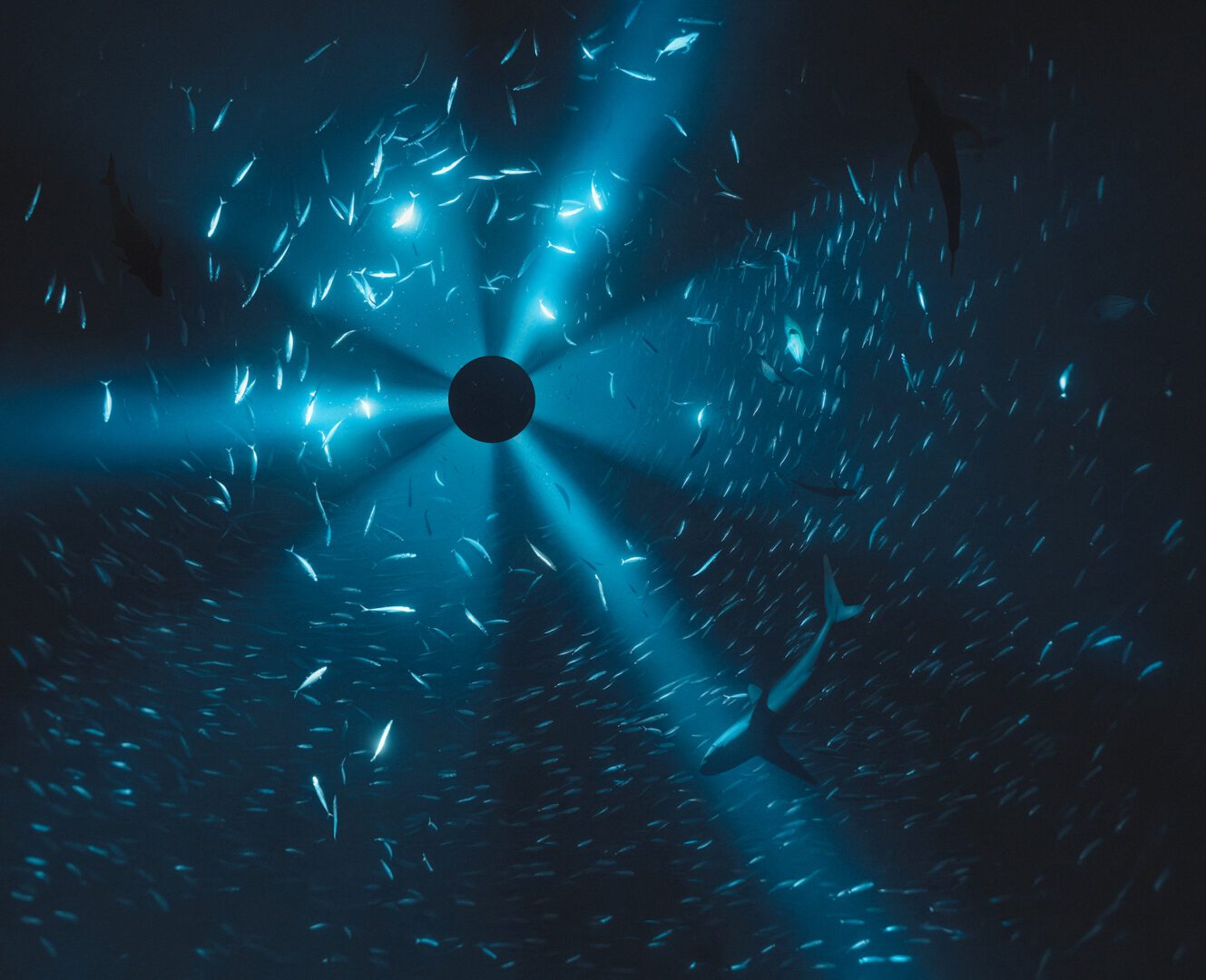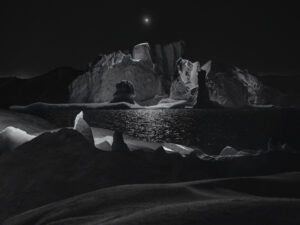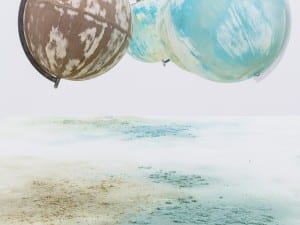“Although the ocean comprises 95% of Earth’s habitable volume, we continue to live as if the planet ends at the shoreline,” says French-Swiss artist Julian Charrière (b. 1987). His latest show, Midnight Zone, opening at Museum Tinguely, Basel, emerges from the sense of disconnect that exists between people and the ocean. It presents photographs, sculptures, installations and videos that deal with our relationship to Earth as “a world of water” – charting a course from seas and lakes to melting ice sheets. Charrière’s practice is grounded in fieldwork, and, over the years, it has taken him to several “extreme” locations, including volcanoes and nuclear test zones. It’s all part of a wider project to decipher how human activity inscribes itself into the fabric of the planet, subtly altering its surfaces, atmospheres and futures. As the museum puts it: “how the human being inhabits the world, and how it in turn inhabits us.”

The eponymous moving-image work, Midnight Zone (2025), dives into the Clarion-Clipperton Zone, an area of the Pacific Ocean that spans 4.5 million square kilometres between Hawaii and Mexico. Lying at its bottom are sought-after deposits containing nickel, manganese, copper, zinc, cobalt and other minerals – putting it at risk of deep-sea mining. But it’s also a place of great biodiversity; scientists are just starting to study some of the species that live at these depths, and it’s believed that disturbance here could severely impact other ecosystems – including the oceans’ role as vital carbon sinks. In Charrière’s film, a Fresnel lens sinks four thousand metres into total darkness – depths that sunlight cannot penetrate. The message: this is not some otherworldly abyss of our imagination, but a real site of ecological and political tension.
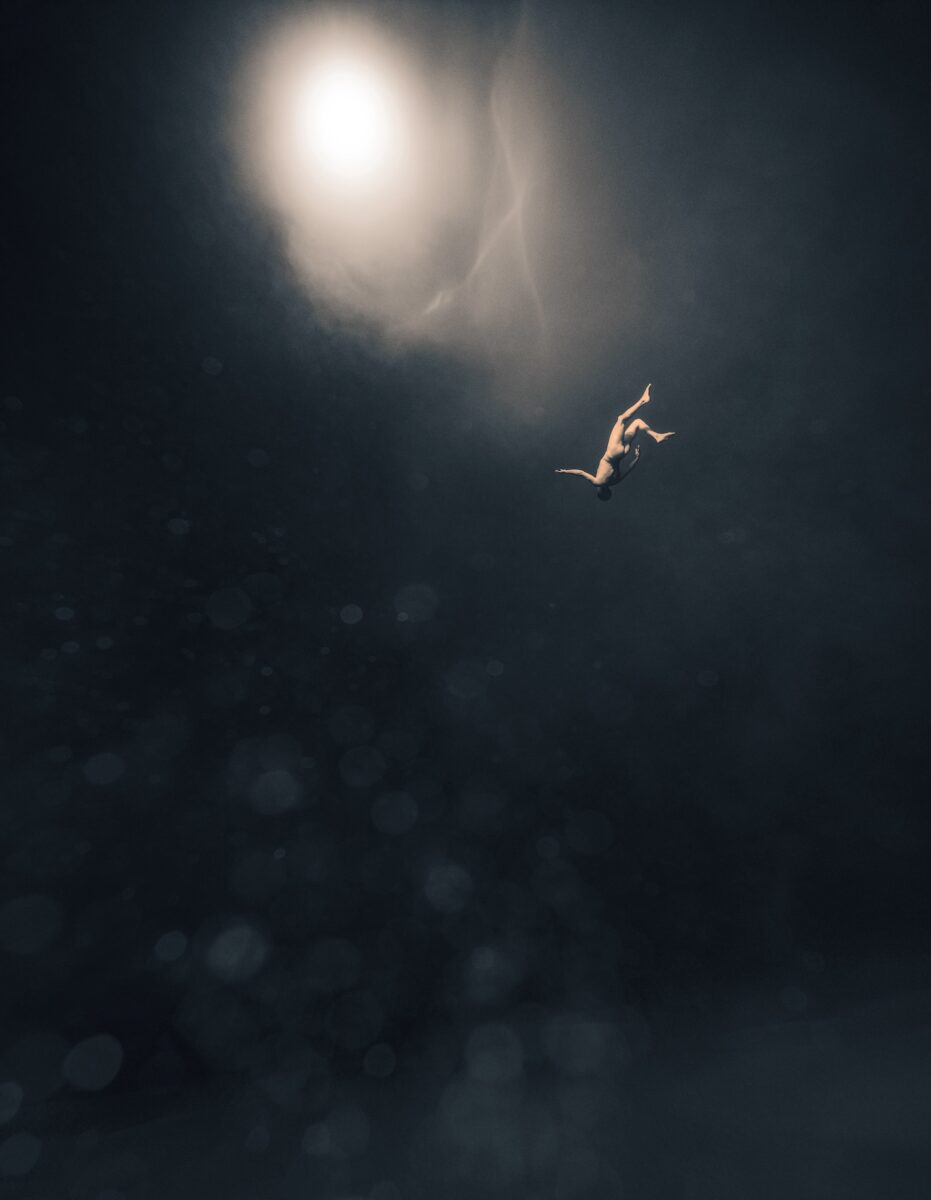

Albedo (2025), another video on view at Museum Tinguely, is shot beneath the Arctic Ocean between icebergs. The viewer follows water as it slips between solid, liquid and vapour, accompanied by a score composed using hydrophone recordings. Structured around a chorus of marine vocalisations, the soundtrack brings together the calls and echolocation clicks of orcas, as well as bowhead, humpback and sperm whales. Albedo forms an effective throughline with Towards No Earthly Pole (2019), an earlier Charrière film that is also part of the exhibition. It presents an uncanny vision of polar landscapes at night, punctuating the darkness with drones carrying spotlights. The piece offers a counterpoint to the romanticised views of dazzling white snow we are used to seeing, and is soundtracked by eerie acoustics of cracking ice and flowing water. They are not static backdrops, but places that move and evolve in flux.
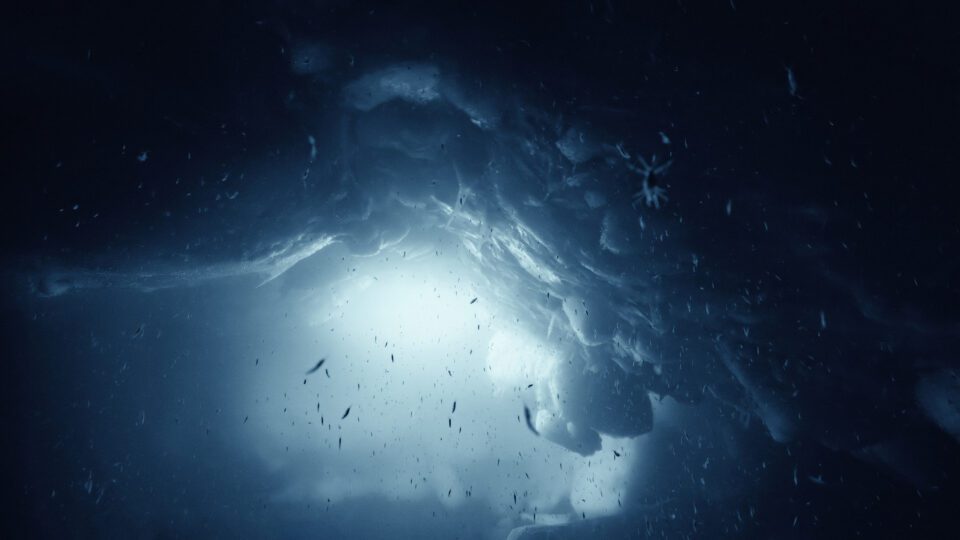
Charrière’s dramatic, deeply atmospheric aesthetic is also visible in the photographic series Where Waters Meet (2019). It captures the ghostly apparitions of naked free divers descending into the abyss of aquatic caves in Mexico known as cenotes. As the divers’ bodies penetrate the chemocline – an obscure and uncanny layer of bottom water full of sulfurous bacteria – they appear to dissolve into the void. It becomes a potent metaphor for the show’s core idea: blurring boundaries between human and environment.
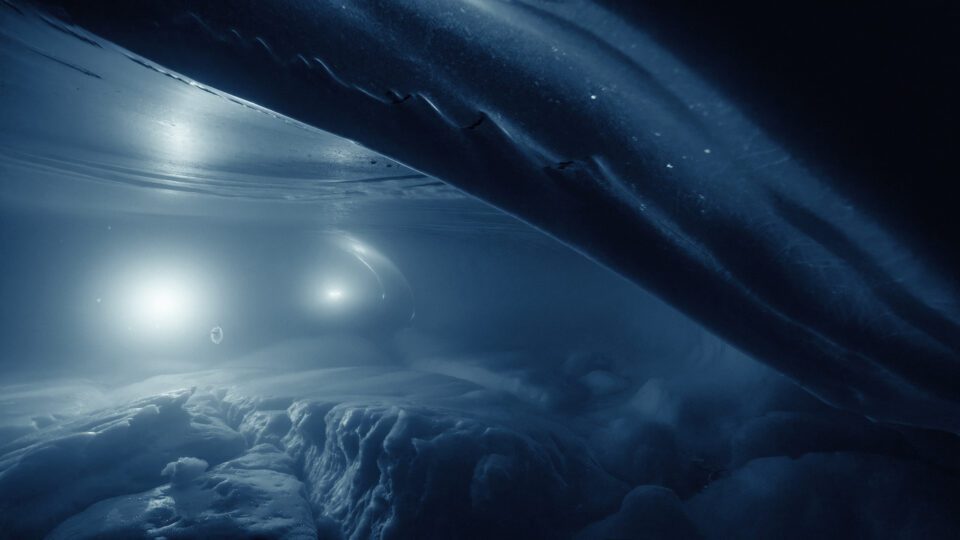
With Midnight Zone, Museum Tinguely joins a number of institutions that are encouraging their audiences to look critically at our connection to the sea. In March, the UK’s Sainsbury Centre launched the Can the Seas Survive Us? season, which is devoted to the precarious nature of marine habitats, and features Charrière as part of a huge roster of contemporary artists including Ólafur Elíasson and Yuki Kihara. As Charrière concludes: “Art, I believe, can serve as a tether – inviting us to inhabit the deep not as an abstraction or resource, but as a living space on which our own survival intimately depends.”
Julian Charrière: Midnight Zone runs 11 June – 2 November at Museum Tinguely, Basel.
Words: Eleanor Sutherland
Image Credits:
1. Julian Charrière, Midnight Zone, (2024). © 2025 ProLitteris, Zürich; Copyright the artist
2. Julian Charrière, Albedo, (2025). Film Still. Copyright the artist; VG Bild-Kunst, Bonn, Germany.
3. Julian Charrière, Where Waters Meet, (2019).
4. Julian Charrière, Where Waters Meet, (2019).
5. Julian Charrière, Albedo, (2025). Film Still. Copyright the artist; VG Bild-Kunst, Bonn, Germany.
6. Julian Charrière, Albedo, (2025). Film Still. Copyright the artist; VG Bild-Kunst, Bonn, Germany.


